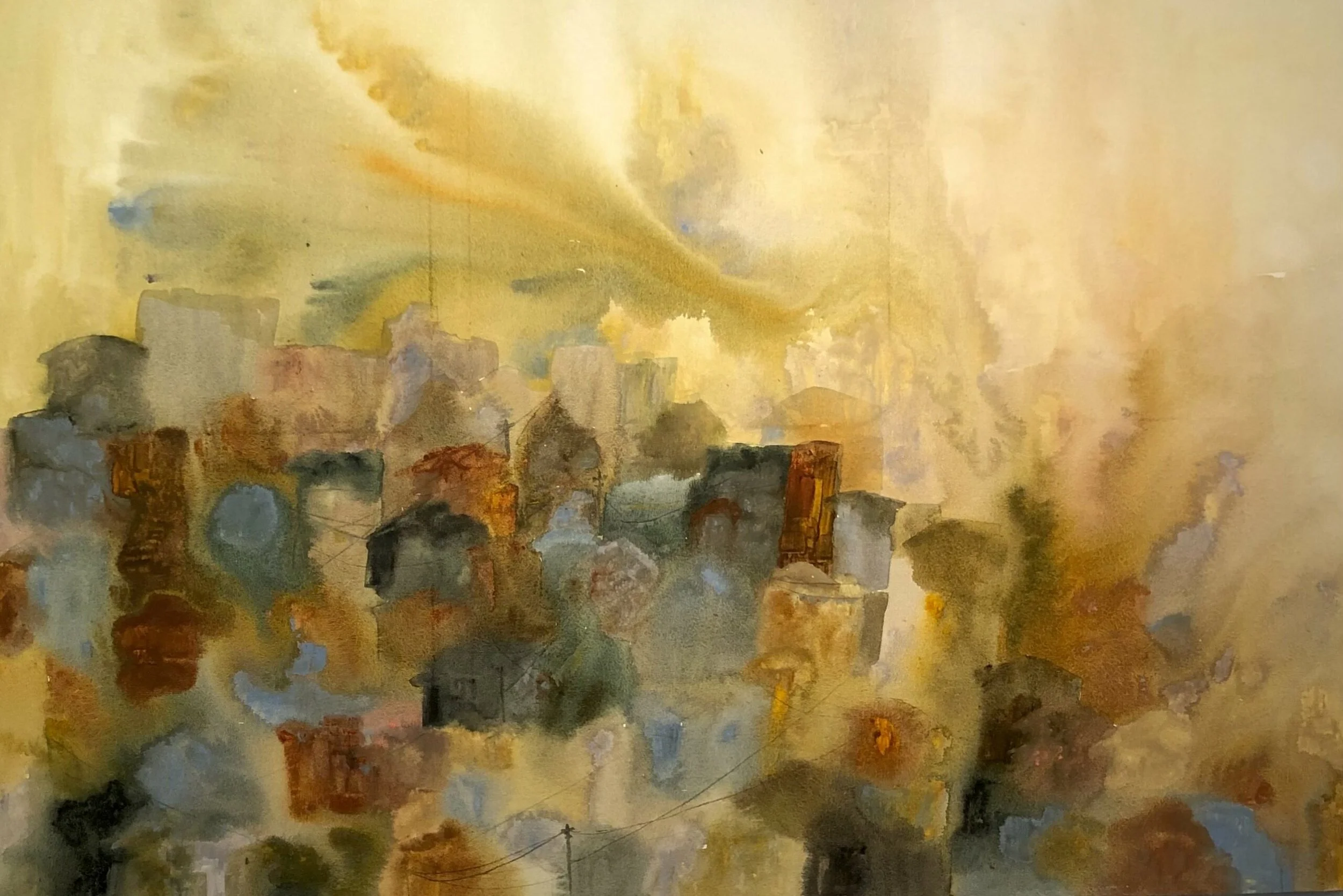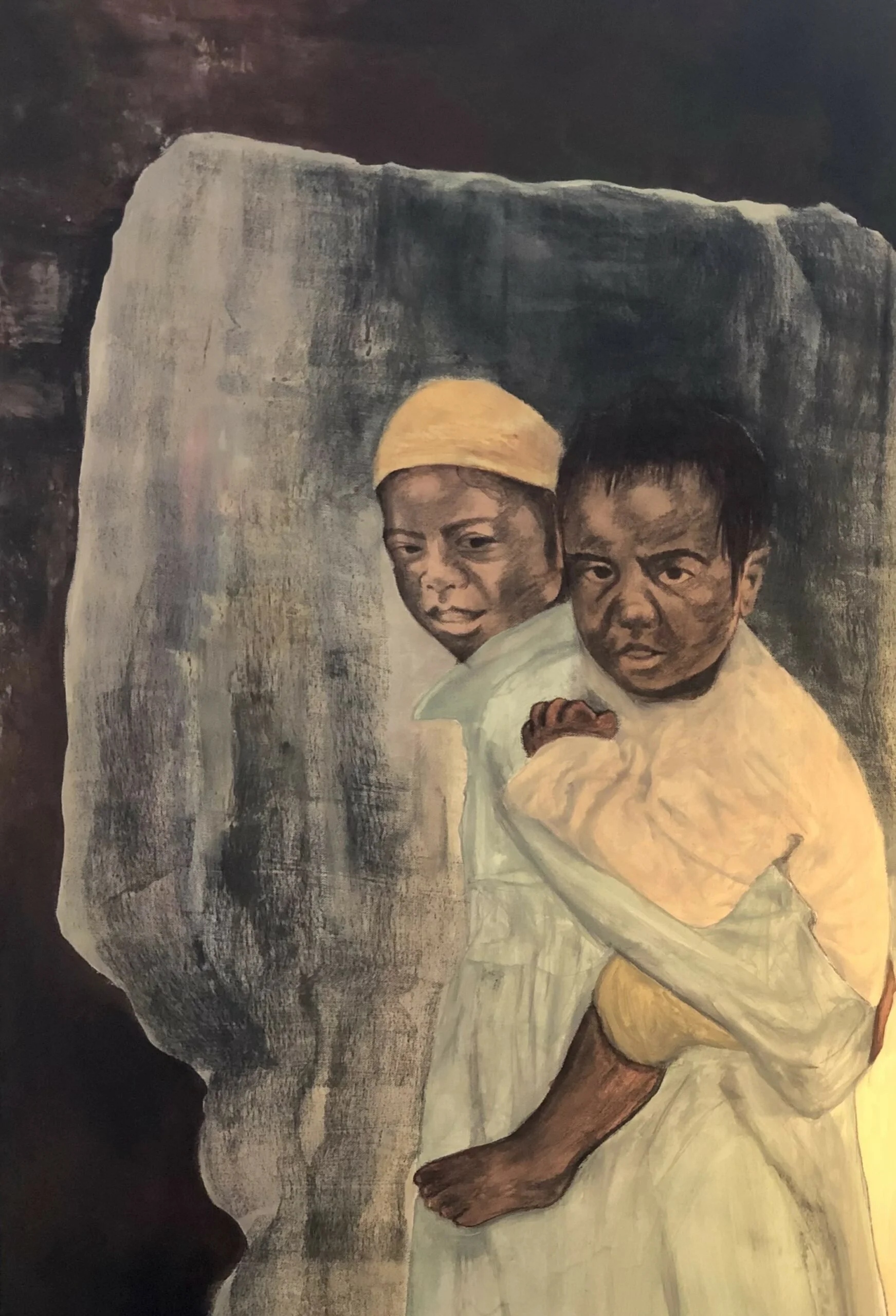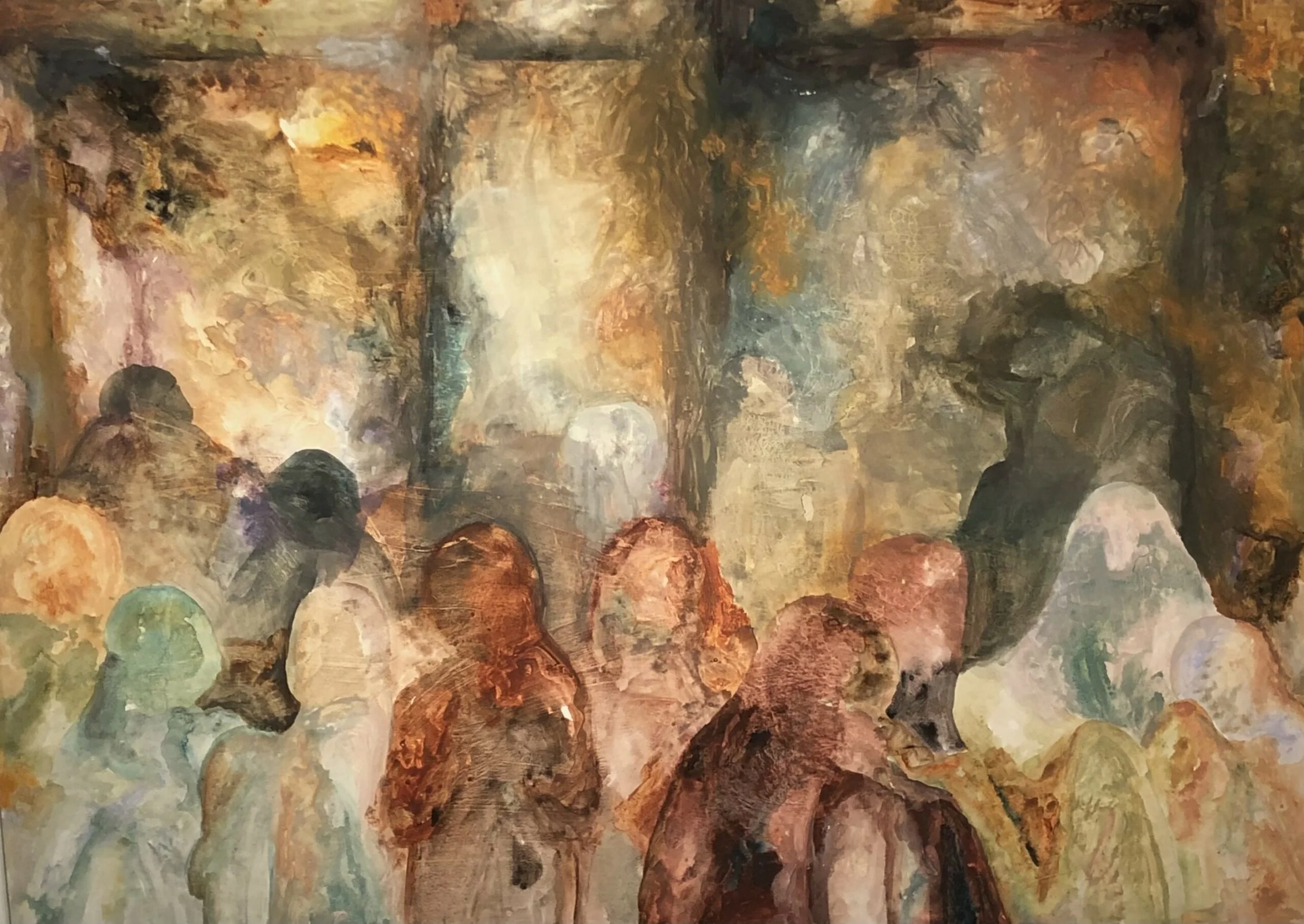Ashiko RATOVO: ‘Art has a profoundly therapeutic effect’ Following the Thread of Her Destiny
We are drawn into the fluid, dreamlike world of Ashiko RATOVO (b. 1995). In just three years, the Malagasy artist has forged a distinctive language of her own — poetic, abstract, and harmonious approach to watercolor that defies convention. Ratovo moves through her practice with organic ease, guided by intuition and memory, allowing emotion to dictate form. Deeply engaged, particularly in advocating for women, she speaks with sincerity about her path, her convictions, and the quiet power that shapes her work. From Antananarivo to Paris, we step inside the intimate creative world of a rising voice in contemporary art.
Ashiko RATOVO in her studio
In this conversation, Ashiko Ratovo reflects on an artistic journey imbued with a sense of ease, where the thread of destiny unfolds with quiet grace. For Ashiko, creation is an organic act — a continuous exploration guided by intuition and an unyielding urge to express. In just a few years, she has captivated many with a distinctive practice, both delicate and assured, where each work emerges as a natural extension of her inner world.
Ngalula MAFWATA : How did your relationship with art begin ?
Ashiko RATOVO : I’ve been a professional artist since 2022, but the story really began in 2016. That year, I entered a street art competition more or less by chance. To my great surprise, I won first prize — even though I was competing alongside professionals and well-known figures from the art scene. That event marked the starting point of a journey that, several years later, led me to take the leap and devote myself fully to my artistic career. However, I would say it was the AINGA program, organized by the Fondation H, that truly initiated me — both technically and in my understanding of the international art worlds and markets. This training, designed for around twenty artists from the Indian Ocean region, helped us better understand how to position ourselves within these dynamics while refining our artistic practice.
Ngalula MAFWATA : What did your first paintings look like, and what stories did they tell ?
Ashiko RATOVO : I held my first solo exhibition in 2022. Before that, I was part of an association of young artists in Antananarivo, through which we carried out several collective projects. However, it was after the training organized by Fondation H that I realized I truly wanted to dedicate myself to art — and that I was capable of doing so. That’s when I embarked on my first solo exhibition, Vohitrin'ny Nofy (The Reliefs of Dreams), a series of works inspired by different types of dreams, especially lucid dreams. The exhibition received excellent feedback, which encouraged me to go further. I then applied for the Paritana Prize (Fondation H), which I was fortunate enough to win. The award allowed me to undertake a three-month residency at the Cité Internationale des Arts in Paris, where I created the series Tsy Manan-kialofana (Homeless).
Rohy (Bounds), Natural pigments, watercolor binder, acrylic, Ashiko RATOVO, 2024
Ngalula MAFWATA : How do you approach your creative process, and what drives your inspiration ?
Ashiko RATOVO : All of my artistic works follow the same guiding principle: they are deeply autobiographical. I only work on subjects that are personal to me, because I don’t feel comfortable creating something I don’t know. I need to feel real depth, to tell a story through each work — a story I can relate to and explain. I conceived and wrote the series Tsy Manan-kialofana (Homeless) during a cyclone in 2023, after which I tragically lost a friend. This series explores all the forms that the notion of “home” can take. For some, it’s a physical space, a house; for others, it can be an addiction, a toxic relationship, or anything else one associates with the idea of “belonging” or “having a home.”
Ngalula MAFWATA : This series seems particularly rich in personal history. What is its origin ?
Ashiko RATOVO : The work Jomaka (Street Child) was born from a personal memory. In 2019, after my mother passed away, I realized that “home” is not necessarily a physical place. Returning to our house, even though everything was arranged exactly as before, the atmosphere was no longer the same. I needed her presence to truly feel at home. On the way to the funeral, I came across children I knew were orphans. Yet they were full of life — laughing, playing — and that image left a deep impression on me. I then wondered: why did I feel the need to help them when they didn’t seem to need me at all?
I realized that we simply don’t share the same perspective on what a home represents. That scene reflected my own “savior complex” and projections. In my mind, I pitied them, but in reality, the only person in distress at that moment was me. My life was at its lowest. This experience made me aware that the different perspectives we carry about the world — and about others — often reflect our own realities far more than they describe those of others.
“This experience made me aware that the different perspectives we carry about the world — and about others — often reflect our own realities far more than they describe those of others.”
Jomaka (Enfant de la rue), watercolor binder, acrylic, fixative, Ashiko RATOVO, 2024
Ngalula MAFWATA : In a way, did you return to the roots of your original vocation of studying and practicing psychology ?
Ashiko RATOVO : Absolutely. Art has a profoundly therapeutic effect — for both the creator and the viewer. It invites introspection, whether through dialogue with the artist or in the quiet solitude of private contemplation between oneself and the work. Through art, I rediscovered what I wanted to do in psychology: the ability to awaken something in another person, to spark a realization, an awareness. Art provides this therapeutic aspect, that“something” that people sometimes need in order to question their surroundings and themselves.
Ngalula MAFWATA : Your work shows a great deal of maturity, marked by reflection and harmony. How do you achieve this ?
Ashiko RATOVO : It’s a very organic process. I paint with watercolor, even though, traditionally, watercolor doesn’t adhere well to canvas. I eventually found my own way to make it work, particularly by adding a lot of water, which creates this abstract, fluid, and alive quality in my pieces. Sometimes it feels as if my artworks breathe, as if they can speak for themselves. I don’t even need to be present for them to exist — my essence is already in them. As they dry, the pigments settle freely, wherever they wish. That’s precisely the essence of my approach: organic. I simply want people to see, feel, and understand what I do. I let myself be carried by the process, with the conviction each time that I will succeed, even without knowing the path in advance.
Ahiahy (Doute, incertitude), Natural pigments, watercolor binder, acrylic, fixative, Ashiko RATOVO, 2024
“I need to feel real depth, to tell a story through each work — a story I can relate to and explain. ”
Ngalula MAFWATA : You also created your own watercolor brand ?
Ashiko RATOVO : Absolutely. My brand Lokorano (which means “watercolor” in Malagasy) was born out of developing my practice. This project is the culmination of two years of work and research, during which I somewhat turned into a chemist [laughs], experimenting at home with locally sourced natural pigments — 100% pure and without preservatives. Watercolor was my personal challenge. I struggled to master the technique and did many experiments, and eventually I asked myself why watercolor paints were so expensive. Step by step, I came to the conclusion that it was better to make them myself [laughs]. Today, I’m particularly proud of it, because it’s the very first art supply brand made in Madagascar that is entirely natural, 100%.
Ngalula MAFWATA : Do you feel a particular attachment to any of your paintings ?
Ashiko RATOVO : Ahiahy (Doubt), currently at Fondation H, is the large-scale version of this series — which will also be exhibited by VL FineArt during Art Shopping. It’s a two-meter by one-and-a-half-meter canvas; my first at this size. There are definitely my tears on this painting [laughs].
I remember receiving the canvas only five days before the exhibition opened and working on it day and night, without really knowing what I was going to make of it. It’s the first piece for which I completely let myself be carried away by the painting. Despite my epicurean personality, I’m a perfectionist in my work and I suffer from a certain social anxiety. Before the opening, I had many apprehensions, especially regarding this piece. In the end, it received a lot of positive feedback, and it was even thanks to this work that I met my gallery owner, Valérie Lefort. It was the first time I felt fully satisfied with a work, and the public was too. This experience truly affirmed my identity as an artist. Before that, I still struggled with imposter syndrome and had difficulty presenting myself as an artist.
Ashiko RATOVO in Paris during her residency with Cité International des Arts.
“I don’t want to make art to live; I want to live to make art.”
Ngalula MAFWATA : Imposter syndrome seems rampant amongt phenomenon among artists and anyone who creates, especially when venturing off the beaten path.
Ashiko RATOVO : Being an artist is still quite poorly perceived here, and even more so when you’re a woman. During my first exhibition, I created a mold representing female genitalia, which shocked many people. But that exhibition left a mark: it was a way for me to fully embrace my commitment. I’m involved in several feminist associations, notably MWE, and I’ve also worked in animation, a field that remains very male-dominated. Recently, we helped produce a short film, La Fabrique des Filles, for the Annecy International Festival, which addresses women’s roles and societal pressures to conform. We aim to screen this film in remote areas of Madagascar to raise awareness about the evolving place of women in society.
These reflections also extend to the art world. We are all capable of sharing an incident or a questionable — sometimes sexist — comment we’ve experienced or overheard at events, often related to our physical appearance. It’s a way of standing our ground, asserting that we’re not here just for fun, but to create seriously and show that it’s possible to make a living from art, not only pursue it as a passion. I don’t want to make art to live; I want to live to make art.
Discover Ashiko RATOVO’s work through VL FineArt and her personal platforms. Her pieces will be on view at the upcoming Art Shopping Paris fair, held at the Carrousel du Louvre from October 16 to 19, 2025.






